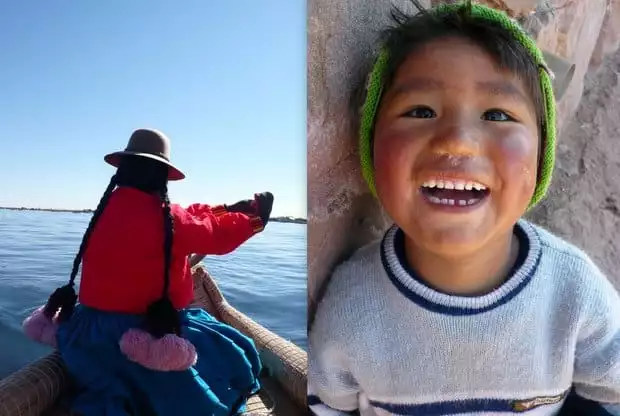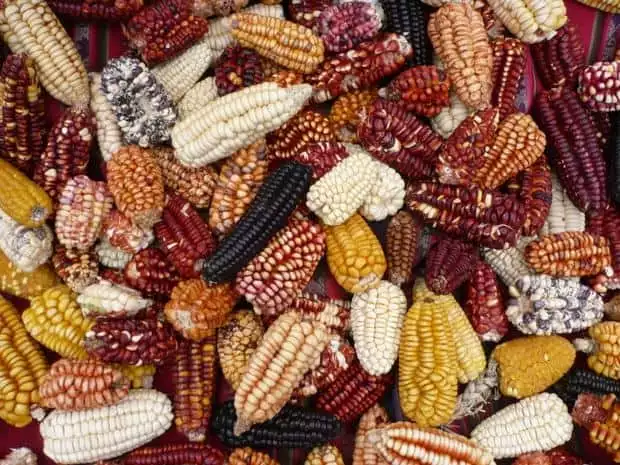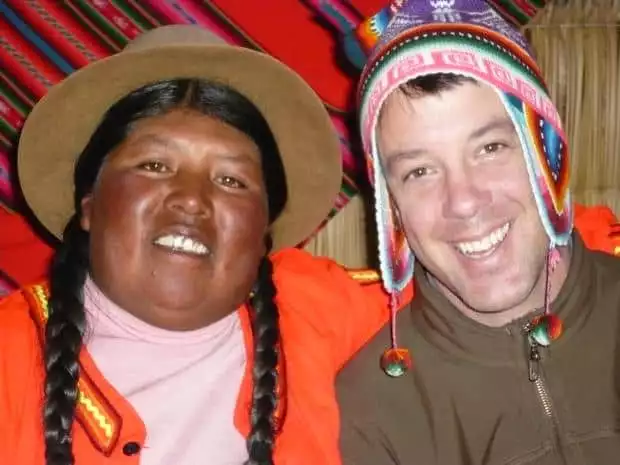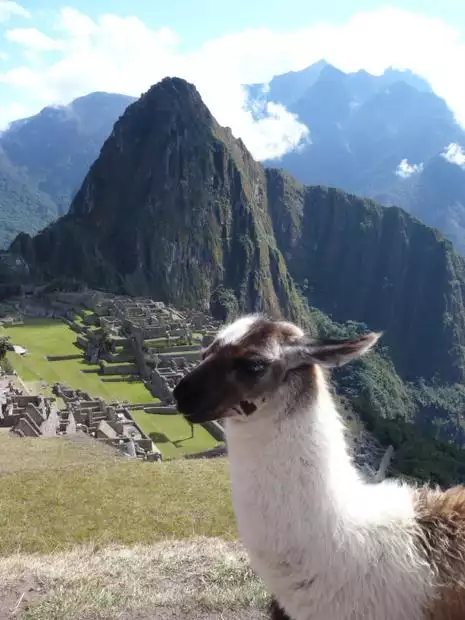AdventureSmith Explorations’ Chris Harter reviews his explorations in Peru with AdventureSmith, traveling on the Machu Picchu Explorer and a 3-day extension to Puno & Lake Titicaca that is part of the 11-day Peru Highlights tour.

Peru’s list of environments, sites, and activities to entertain and educate travelers is extensive indeed. With locations as diverse as the glaciated peaks of the high Andes, the Atacama and Sechura deserts, the upper rainforest tributaries of the Amazon basin, and the highest navigable lake in the world at Lake Titicaca, Peru offers an astounding array of environments for the adventurous traveler to explore. Within these environments there exist countless historical and cultural sites of interest such as the famous Inca site of Machu Picchu, the pre-Inca geoglyph formations of the Nazca lines, and the UNESCO world heritage city of Cusco. In and around these environments one can trek to remote Inca sites along the many winding trails of the Andes, raft down the Urubamba river through the Sacred Valley, kayak along the shores and islands of Lake Titicaca, or participate in any number of activities in incredibly scenic settings. But I knew all of this awaited me before my recent two week trip down to this South American gem. What I was not prepared for was the generosity, warmth, and interaction I was privileged to enjoy with the local peoples of Peru.
After a long flight and tiring day down to Peru I could think of nothing but bed before beginning my busy schedule the following day. But after checking in to my Lima hotel at 1:00am the desk attendant and bartender insisted I try the national drink, a complimentary Pisco sour, before retiring. Beyond being gracious and welcoming, there’s a reason they insisted I try it. It is without a doubt one of the world’s most delicious concoctions, and they were clearly proud of their national cocktail. This example of national pride and hospitality became a constant theme throughout my travels in Peru. Pisco sours became a common theme as well!
The first stop on my Peru journey brought me to the Amazon town of Puerto Maldonado, a gateway for travels along the Amazon tributary of the Madre de Dios River (Mother of God). The flight alone was worth the trip. In no less that a half hour we transitioned from the incredibly rugged peaks and glaciers of the Andes to soaring over the dense lowland rainforests of the Amazon basin. The rapid and dramatic change in environments was unlike anything I have ever seen.

Upon arrival we were greeted and brought to the vessel which motored us 45 minutes down river to the Reserva Amazonica Lodge. Having had several Amazon experiences previously, I can say without a doubt this was the most comfortable Amazon lodge I have had the privilege of staying at. The grounds were impeccable, the delicious gourmet menu focused on local Amazonian ingredients, and the separate cabana accommodations were extremely comfortable while maintaining environmentally sustainable practices. The list of excursions and activities on offer from the lodge was very extensive. Beyond the wilderness hikes and water based journeys into the jungle habitats their activities for Amazonian cultural immersion and education was impressive. I opted for an all day hike and dugout canoe paddle along the Gamitana creek one day and a visit to the rainforest canopy walkways and platforms the next. Beyond the wildlife viewing that one expects with any journey into the Amazon, I was surprised at the participatory nature of the excursions offered. I fished for piranha using beef for bait on the end of a line tied to a stick from a locally crafted dugout canoe. I sampled a freshly picked and succulent annona fruit, easily the tastiest fruit on the planet. I smelled, tasted, and rubbed any number of useful plants to see first hand their value to the local people. I even wove plant fibers to create garments and adornments. The intrinsic value that this type of participation creates is something that stays with you long after the trip ends.


For my second leg of my journey I made my way to the central valleys and mountain ranges surrounding Cusco, the Urubamba Valley (Sacred Valley), and Machu Picchu. Deep rooted cultural pride was immediately apparent upon my arrival to Cusco. I expected to see traditional garments and alpacas in the villages of this area, but outside the front door of my Cusco hotel? This is part of Cusco’s charm, an immediate exposure to Peru’s traditions and culture, and even some of their furry domesticated friends. For the brave epicureans, Cusco is also an adventurous culinary destination with alpaca and guinea pig making it’s way onto many menus. In case you’re curious, guinea pig tastes oddly like duck.
After touring Cusco’s many museums, churches, and plazas that helped to make this a UNESCO World Heritage city, I made my way into the Urubamba Valley. Here I toured incredible lesser Inca ruins, artisan markets, and examples of local industry and crafts where I was able to view textiles being woven, salt being harvested, and mud bricks being made and used for the local structures of the area. All of this under the beauty of the dramatic and vertical mountains on either side of the Urubamba Valley.

Then I made my way further east to the renowned Inca ruins of Machu Picchu. Words fail to describe the beauty and wonder that accompany one as they tour the ruins. After a comprehensive and informative tour with our guide Rueben, we were left to sit and speculate about the previous inhabitants as the clouds and sun danced and mixed their way along the ruins and surrounding mountains. I am generally not a spiritual person, but the beauty and history of this place easily lends itself to introspection. This is certainly a site not to be missed for any travels within Peru. Again the Peruvian people demonstrated their warmth as a couple from Lima introduced themselves, took photos of me framed by the ruins, and promptly invited me to a family dinner back in Lima. I only wish my schedule had allowed me to take them up on their generous offer.
During the last portion of my travels I found myself exploring the Puno and Lake Titicaca region. Surprisingly, this area was my personal favorite of the trip. The region had an austere beauty to it with the stark high altitude landscape and enormous Lake Titicaca fringed by snow capped peaks. But what made it so very special was again the people that I encountered along the way. Although the high altitude of well over 13,000 had an immediate impact on me, everyone I encountered inquired on how I was doing, and somehow this seemed to alleviate the affects of the altitude. The constant helpful reminders from the locals and our guide Guido to drink plenty of water and cocoa tea helped as well.
VIEW ALL PERU TRIPS
See the full list of itinerary options, plus reviews.
After a relaxing acclimatization night we ventured into the interior of the lake by boat to the famous reed island of Uros and the larger neighboring island of Taquile. Here again the people made the day. Uros is actually made up of dozens of smaller floating islands made of the local totora reeds where the extended families of the Amayra people originally settled as a means of evading Spanish settlers. On the island we visited I was immediately taken under the wing of the island’s matriarch who offered the grand tour. She invited me to sample the grains she had been milling that morning and the fleshy center of the torora reed that is crucial to their diet. She proudly displayed her home, noting the reed weaving handiwork her husband had done. And she let me feed her pets, a grumpy cormorant type bird and continually hungry juvenile condor. Beyond being an incredibly gracious host, she insisted on paddling me around for a bit in their family’s reed boat. It was a little embarrassing to be chauffeured around the lake by a woman who was clearly a stronger paddler than I could ever hope to be.

A bit sad with the departure, we then made our way to the terra firma island of Taquile where the Quechua people have most definitely held on to their traditional agrarian society. After a rigorous hike through the islands interior we stopped at a village for lunch and a visit with the local people. Without refrigeration on hand the trout we enjoyed was the tastiest and surely the freshest I’ve ever had. After lunch we sat and had a discussion on the customs, costumes, and traditions of the island followed by a dance and music performance by the village men. After an elaborate goodbye we left the islands of Titicaca, and over the next two days I made my way back to the United States.

The sites in Peru are not to be missed. Machu Picchu lived up to the hype, and then some. The Amazon holds mega-diversity in flora and fauna found no where else on earth. Lake Titicaca is an unparalleled gem in the Andes. As wonderful as these locations and sites were, they were made all that much more special by the people that inhabit these locations. Never before have I been greeted with such open and inviting arms. These types of experiences with local people simply cannot be had on large cookie cutter group tours. To get out and among the wonderful people of Peru you must travel in small or privately led tours. Call our Adventure Specialists to see why our style of travel suites Peru so well. We’d be happy to talk about eating guinea pig or any other topics that you may have interest in.
This Peru adventure travel review was written by an AdventureSmith Explorations crew member. Read all AdventureSmith Expert Reviews for more trip reports, or contact one of our Adventure Specialists to learn more about these small ship cruises and wilderness adventures: 1-800-728-2875.
Comments will be moderated and will appear after they have been approved.